 Melinda Henneberger at Huffington Post runs a news item today concerning an August 2006 letter from the voting machine company ES&S to Florida Elections officials warning about a defect in the iVotronic touch-screen voting machine which succeeded in losing the votes of some 18,000 voters in the razor-thin election between Christine Jennings (D) and Vern Buchanan (R) in Florida's 13th U.S. House Congressional district. Buchanan was provisionally seated, pending a Congressional challenge and state lawsuit filed by Jennings, after he was declared the "winner" by 369 votes.
Melinda Henneberger at Huffington Post runs a news item today concerning an August 2006 letter from the voting machine company ES&S to Florida Elections officials warning about a defect in the iVotronic touch-screen voting machine which succeeded in losing the votes of some 18,000 voters in the razor-thin election between Christine Jennings (D) and Vern Buchanan (R) in Florida's 13th U.S. House Congressional district. Buchanan was provisionally seated, pending a Congressional challenge and state lawsuit filed by Jennings, after he was declared the "winner" by 369 votes.
The Sarasota, FL, Election Supervisor, Kathy Dent, decided against both having their machines patched to take care of the defect and posting a warning notice for voters as advised by ES&S. "No one in the State of Florida updated," their machines after receiving the letter, Dent told Henneberger. "That's because it was too close to the election. It was a state decision that it was too late to make changes."
Notably, as you'll see in the full letter as posted below, it was CC'd to David Drury, the Chief of Florida's Bureau of Voting Systems Certification. Drury, responsible for overseeing state certification of voting systems, in an extraordinary conflict of interest as we've noted several times previously, was part of the state team commissioned to audit the iVotronic systems used in the election. The commission was empaneled after the state was forced to relent and launch such an investigation in light of the controversy after their initial denials that there was any problem at all with the extraordinarily high undervote rate in the Sarasota-only section of the race.
The ES&S letter, as Henneberger noted, was only seen recently by Jennings's attorneys since "it was not provided to them by election officials as it should have been under discovery motions in the case," according to one of her attorneys.
Instead, the legal team came across the document only recently as posted "on a North Carolina-based website on election reform," according to Henneberger.
That website, as it turns out, is the NC Coalition for Verified Voting as founded by Election Integrity advocate Joyce McCloy. McCloy had attempted, both before and after the election, to get the attention of elections officials and the Jennings legal team. The letter, not linked by Henneberger, is posted here [PDF]. We've also posted the letter in full, as well, at the bottom of this article.
McCloy wrote The BRAD BLOG today expressing her frustration at trying to get anyone in Florida to take notice of the letter warning of "slow response times" to voters' attempts to select candidates on the ballot.
"I sent that memo (and my concerns) to anyone I could think of," McCloy explained in her email, "and this year to every election reform list serve that I could, posted it on political message boards. I asked and asked - has this bug been fixed?"
Apparently the answer is no; the bug was neither fixed, nor did Dent bother to warn voters in Sarasota about the problem as had been advised in the letter by ES&S.
As Henneberger reports today...
"The improvement will require an update to the firmware, and state-level certification," in advance of the general election in November, the letter said. Meanwhile, for early voting, "In order to avoid any potential issues at the polls...it is our recommendation that you train your poll workers and voters to expect this slightly delayed response time...We have included with this mailing a sample voting booth instruction sign for your review and use."
The poster advised voters that it might be necessary to hold their selection on the touch screen for several seconds in order to register a response.
But Dent said she decided against using the posters "because we already had instructions on voting on the touch screens" displayed in the voting booths, "and we hadn't had that problem."
Emails from Dent dated August 24 indicate that she not only decided against using the signs warning voters that there might be a delayed response - but instead used signs giving the opposite message: "Touch Screen Voting, Easy as 1, 2, 3."
Dent continues to maintain that the reason for the inordinately high undervote rate (nearly 15%) was due to a combination of voters choosing not to vote for either candidate (which ignores the fact that the undervote rate was normal in other county tallies for the same race, and even among Sarasota's own absentee voters who used paper ballots) and bad ballot design.
McCloy rejects the theory that bad ballot design was the culprit, as Mecklenburg County, NC, which also used a version of the ES&S iVotronic, had normal undervote rates despite a ballot design which may have been even worse than Sarasota's. As McCloy posted in comments late February on the Princeton University computer science professor Ed Felten's website:
Here is Sarasota FL 13’s ballot http://www.ncvoter.net/d...arasota_ballot_style.pdf
Now take a look at what appears to be a more confusing ballot style for Mecklenburg County, NC, the NC 08 ballot:
http://www.ncvoter.net/d...klenburg_2006_ballot.pdf
(notice the nearly hidden placement of the US congressional race?) Meckelnburg had a 4 % undervote rate for that contest.
Here is a memo from the NC State Board of Elections explaining the differences in NC iVotronics and the FL iVotronics, as well as a ballot comparison:
http://www.ncvoter.net/d...Ballot_Comparison_06.pdf
Despite the ES&S letter's warning that "This delayed response to touch may vary from terminal to terminal and also may not occur every single time a terminal is used," the state's official audit --- which to the surprise of almost nobody was spun by state officials as offering a clean bill of health for the paperless touch-screen systems --- does not seem to have investigated this particular issue.
The August 15, 2006 letter from ES&S to Florida Elections Officials follows in full below...

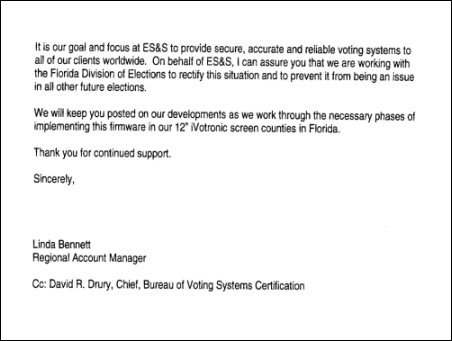


 A Pretty Weak 'Strongman': 'BradCast' 10/30/25
A Pretty Weak 'Strongman': 'BradCast' 10/30/25 'Green News Report' 10/30/25
'Green News Report' 10/30/25
 Proposal for 'First Politically Viable Wealth Tax' Takes Shape in CA: 'BradCast' 10/29/25
Proposal for 'First Politically Viable Wealth Tax' Takes Shape in CA: 'BradCast' 10/29/25 Monster Storm, Endless Wars, Gamed Elections:
Monster Storm, Endless Wars, Gamed Elections: 'Green News Report' 10/28/25
'Green News Report' 10/28/25 Let's Play 'Who Wants
Let's Play 'Who Wants Sunday 'Cartoonists Dilemma' Toons
Sunday 'Cartoonists Dilemma' Toons Exiled NOAA Scientists Resurrect Critical Disaster Database: 'BradCast' 10/23/25
Exiled NOAA Scientists Resurrect Critical Disaster Database: 'BradCast' 10/23/25  'Green News Report' 10/23/25
'Green News Report' 10/23/25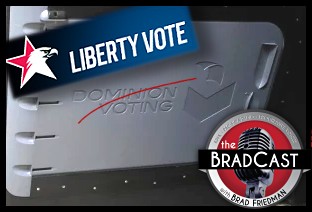 Trump-Allied GOP Partisan Buys Dominion Voting Systems: 'BradCast' 10/22/25
Trump-Allied GOP Partisan Buys Dominion Voting Systems: 'BradCast' 10/22/25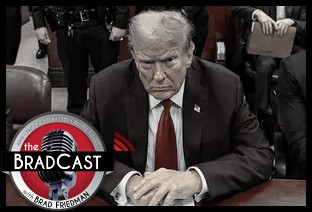 Trump, Republican Law(lessness) & (Dis)Order: 'BradCast' 10/21/25
Trump, Republican Law(lessness) & (Dis)Order: 'BradCast' 10/21/25 'Green News Report' 10/21/25
'Green News Report' 10/21/25 Celebrating 'No Kings': 'BradCast' 10/20/25
Celebrating 'No Kings': 'BradCast' 10/20/25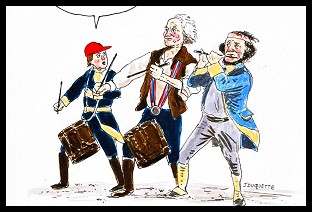 Sunday 'How It Started' Toons
Sunday 'How It Started' Toons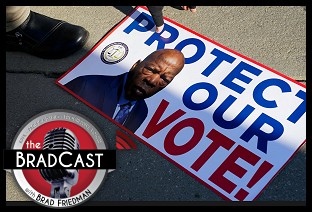 SCOTUS Repubs Appear Ready to Gut Rest of Voting Rights Act: 'BradCast' 10/16/25
SCOTUS Repubs Appear Ready to Gut Rest of Voting Rights Act: 'BradCast' 10/16/25 'Green News Report' 10/16/25
'Green News Report' 10/16/25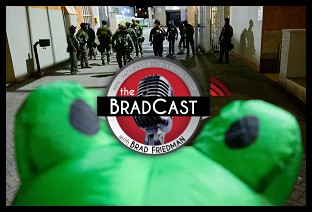 The 'Epstein Shutdown' and Other Autocratic Nightmares: 'BradCast' 10/15/25
The 'Epstein Shutdown' and Other Autocratic Nightmares: 'BradCast' 10/15/25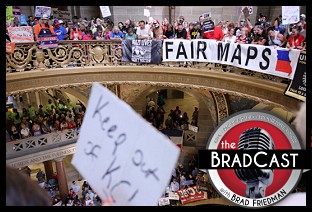 Group Vows to Block MO's GOP U.S. House Gerrymander: 'BradCast' 10/14/25
Group Vows to Block MO's GOP U.S. House Gerrymander: 'BradCast' 10/14/25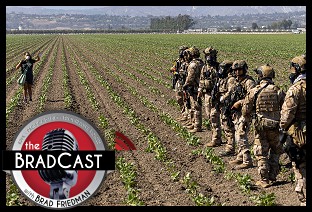 Trump Labor Dept. Warns Trump Policies Sparking Food Crisis: 'BradCast' 10/9/25
Trump Labor Dept. Warns Trump Policies Sparking Food Crisis: 'BradCast' 10/9/25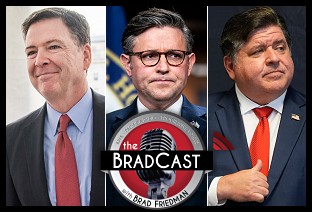 Trump's Losing Battles: 'BradCast' 10/8/25
Trump's Losing Battles: 'BradCast' 10/8/25 Trump, Roberts and His Stacked, Packed and Captured SCOTUS: 'BradCast' 10/7/25
Trump, Roberts and His Stacked, Packed and Captured SCOTUS: 'BradCast' 10/7/25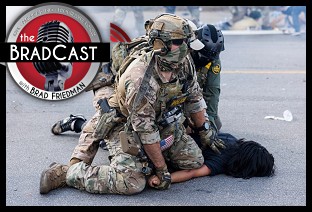 Trump Attempting His 'Invasion from Within': 'BradCast' 10/6/25
Trump Attempting His 'Invasion from Within': 'BradCast' 10/6/25 Biden Budget Expert: Mass Firings in Shutdown 'Illegal': 'BradCast' 10/2/25
Biden Budget Expert: Mass Firings in Shutdown 'Illegal': 'BradCast' 10/2/25 Why is DOJ Suing 'Blue' States for Their Voter Databases?: 'BradCast' 10/1/25
Why is DOJ Suing 'Blue' States for Their Voter Databases?: 'BradCast' 10/1/25
 VA GOP VOTER REG FRAUDSTER OFF HOOK
VA GOP VOTER REG FRAUDSTER OFF HOOK Criminal GOP Voter Registration Fraud Probe Expanding in VA
Criminal GOP Voter Registration Fraud Probe Expanding in VA DOJ PROBE SOUGHT AFTER VA ARREST
DOJ PROBE SOUGHT AFTER VA ARREST Arrest in VA: GOP Voter Reg Scandal Widens
Arrest in VA: GOP Voter Reg Scandal Widens ALL TOGETHER: ROVE, SPROUL, KOCHS, RNC
ALL TOGETHER: ROVE, SPROUL, KOCHS, RNC LATimes: RNC's 'Fired' Sproul Working for Repubs in 'as Many as 30 States'
LATimes: RNC's 'Fired' Sproul Working for Repubs in 'as Many as 30 States' 'Fired' Sproul Group 'Cloned', Still Working for Republicans in At Least 10 States
'Fired' Sproul Group 'Cloned', Still Working for Republicans in At Least 10 States FINALLY: FOX ON GOP REG FRAUD SCANDAL
FINALLY: FOX ON GOP REG FRAUD SCANDAL COLORADO FOLLOWS FLORIDA WITH GOP CRIMINAL INVESTIGATION
COLORADO FOLLOWS FLORIDA WITH GOP CRIMINAL INVESTIGATION CRIMINAL PROBE LAUNCHED INTO GOP VOTER REGISTRATION FRAUD SCANDAL IN FL
CRIMINAL PROBE LAUNCHED INTO GOP VOTER REGISTRATION FRAUD SCANDAL IN FL Brad Breaks PA Photo ID & GOP Registration Fraud Scandal News on Hartmann TV
Brad Breaks PA Photo ID & GOP Registration Fraud Scandal News on Hartmann TV  CAUGHT ON TAPE: COORDINATED NATIONWIDE GOP VOTER REG SCAM
CAUGHT ON TAPE: COORDINATED NATIONWIDE GOP VOTER REG SCAM CRIMINAL ELECTION FRAUD COMPLAINT FILED AGAINST GOP 'FRAUD' FIRM
CRIMINAL ELECTION FRAUD COMPLAINT FILED AGAINST GOP 'FRAUD' FIRM RICK SCOTT GETS ROLLED IN GOP REGISTRATION FRAUD SCANDAL
RICK SCOTT GETS ROLLED IN GOP REGISTRATION FRAUD SCANDAL VIDEO: Brad Breaks GOP Reg Fraud Scandal on Hartmann TV
VIDEO: Brad Breaks GOP Reg Fraud Scandal on Hartmann TV RNC FIRES NATIONAL VOTER REGISTRATION FIRM FOR FRAUD
RNC FIRES NATIONAL VOTER REGISTRATION FIRM FOR FRAUD EXCLUSIVE: Intvw w/ FL Official Who First Discovered GOP Reg Fraud
EXCLUSIVE: Intvw w/ FL Official Who First Discovered GOP Reg Fraud GOP REGISTRATION FRAUD FOUND IN FL
GOP REGISTRATION FRAUD FOUND IN FL

































